26 of the Best Post-Apocalyptic Movies of All Time (Updated 2025)
Post-apocalyptic movies have been a popular genre for decades, and for good reason. They offer a glimpse into a possible future where the world has been ravaged by war, natural disaster, or other cataclysmic events. These movies often explore themes of survival, hope, and the nature of humanity.
In this blog post, I will discuss 20 of the best post-apocalyptic movies ever made. I have chosen these movies based on their critical acclaim, commercial success, and lasting impact on the genre. I believe that these movies offer a diverse and thought-provoking look at the post-apocalyptic landscape.
I have done a deep research on these movies and I believe that they are the best of the best. I hope you enjoy reading about them and watching them as much as I did.
I will also discuss the different types of post-apocalyptic movies that exist, and I will provide some background information on the genre. I hope that this blog post will give you a better understanding of post-apocalyptic movies and why they are so popular.
Beyond the Ruins: 20 Must-Watch Post-Apocalyptic Movies That Define the Genre
Post-apocalyptic fiction is a subgenre of science fiction that deals with the aftermath of a major catastrophe that has caused the collapse of civilization. This catastrophe can be caused by nuclear war, pandemic, climate change, alien invasion, a viral outbreak, environmental disaster, technological collapse or any other event that results in widespread death and destruction.
Post-apocalyptic movies often explore themes of survival, hope, and rebuilding. They typically feature characters who are struggling to survive in a world that has been turned upside down. These characters must often deal with the harsh realities of life in a post-apocalyptic world, such as scarce resources, violence, and lawlessness.
Related post: Foundation TV Series Review: A Stellar Adaptation of Asimov's Classic Sci-Fi
Post-apocalyptic stories are set in a world that has been dramatically altered, where survivors must navigate new challenges, threats, and struggles for survival.
Key elements of post-apocalyptic fiction and movies include:
- Dystopian Setting: The world depicted in post-apocalyptic stories is often characterized by a dystopian setting, marked by a lack of infrastructure, scarcity of resources, lawlessness, and a general sense of despair. The familiar institutions and technologies of modern society are usually absent or severely degraded.
- Survival: The main focus of post-apocalyptic stories is often the struggle for survival. Characters must find food, water, shelter, and protection from both environmental hazards and other survivors who might pose a threat.
- Societal Breakdown: The collapse of governmental systems, social structures, and institutions is a common theme. This breakdown often leads to the emergence of new power dynamics and the formation of small, self-contained communities or groups.
- Exploration of Human Nature: Post-apocalyptic fiction often delves into the depths of human nature. Characters' motivations, ethical choices, and responses to extreme circumstances are central to the storytelling. This can include examining themes of morality, altruism, selfishness, and the potential for both good and evil within people.
- Environmental Changes: The apocalyptic event often leaves lasting changes on the environment. This could result in extreme weather conditions, altered landscapes, and a reshaping of ecosystems.
- Resource Scarcity: The scarcity of essential resources such as food, water, and medical supplies adds tension to the story and drives character actions and conflicts.
- Isolation and Connection: While post-apocalyptic scenarios can be isolating due to the breakdown of communication and transportation, they also explore the importance of human connection and relationships. Characters often form bonds with others as they navigate the challenges together.
- Hope and Resilience: Even in the bleakest of circumstances, post-apocalyptic fiction often carries themes of hope and resilience. Characters may strive to rebuild society, find a cure, or create a better world for future generations.
2025 Update: We've revisited our list of the best post-apocalyptic films, adding even more thrilling and thought-provoking entries.
Here are the 26 best post-apocalyptic movies:
1. Mad Max: Fury Road (2015)
Mad Max: Fury Road is a post-apocalyptic action film set in a desert wasteland. The world has been ravaged by nuclear war, and the few survivors live in isolated communities or in gangs that roam the desert in search of resources.
The film follows Max Rockatansky, a former cop who is now a loner. He is captured by Immortan Joe, a tyrannical warlord who rules over a Citadel in the desert. Joe kidnaps a group of women, including Imperator Furiosa, and Max escapes from Joe's compound to help her rescue them. They embark on a journey across the desert, pursued by Joe's army.
Mad Max: Fury Road is a visually stunning film with incredible action sequences. It is also a thought-provoking film that explores themes of survival, hope, and freedom. The film's post-apocalyptic world is a harsh and unforgiving place, but it is also a place where people can find strength and resilience.
2. The Road (2009)
The Road is a 2009 post-apocalyptic drama film based on the 2006 novel of the same name by Cormac McCarthy. The film stars Viggo Mortensen and Kodi Smit-McPhee as a father and his son in a post-apocalyptic wasteland.
The film takes place after an unspecified cataclysm has destroyed civilization and most of the human race. The few survivors live in small groups, scavenging for food and resources. The world is cold, dark, and dangerous, and the survivors are constantly at risk of being attacked by other groups or by the elements.
The father and son in the film are trying to find a safe place to live. They travel south, hoping to find a warmer climate and a better chance of survival. Along the way, they must deal with the harsh conditions of the wasteland, as well as the threat of violence from other survivors.
The Road is a bleak and depressing film, but it also contains a message of hope. The father and son in the film never give up, even in the face of overwhelming odds. They are determined to survive, and they are willing to do whatever it takes to protect each other.
3. Mad Max (1979)
Mad Max is a 1979 Australian dystopian action film directed by George Miller. It stars Mel Gibson as Max Rockatansky, a police officer in a dystopian future where lawlessness and violence have become the norm.
The film follows Max as he tries to avenge the death of his wife and child at the hands of a biker gang. Along the way, he teams up with a group of survivors who are also trying to make their way in the harsh world.
Mad Max is a classic post-apocalyptic film that helped to define the genre. It is a visually stunning film with exciting action sequences. It also explores themes of violence, lawlessness, and the importance of family.
4. Children of Men (2006)
Children of Men (2006) paints a chilling portrait of a near-future world on the brink of collapse due to global infertility. In a world where humanity faces extinction due to the inability to conceive, societal order has crumbled, and chaos reigns. Theo Faron (Clive Owen), a disillusioned bureaucrat, becomes an unlikely hero when he's tasked with helping a miraculously pregnant woman reach safety.
The film's post-apocalyptic conditions are marked by refugee crises, authoritarian control, and a sense of impending doom. Director Alfonso Cuarón masterfully immerses audiences in a world of despair, using long, unbroken takes to enhance the sense of urgency and realism. As Theo and his companions navigate danger and desperation,
"Children of Men" weaves a gripping narrative that reflects on hope, sacrifice, and the resilience of the human spirit even in the darkest of times.
5. Snowpiercer (2013)
Snowpiercer (2013) envisions a future where the remnants of humanity are confined to a colossal, perpetually moving train after a failed climate-engineering experiment plunges the world into a new ice age. The train becomes a microcosm of society, divided into classes with the wealthy living in luxury at the front and the oppressed poor confined to squalor at the tail.
Curtis (Chris Evans) leads a revolt from the back of the train, setting off a tumultuous journey that symbolizes the fight against social inequality. The film's post-apocalyptic world showcases the extreme class divide, environmental degradation, and a closed ecosystem in motion.
Directed by Bong Joon-ho, "Snowpiercer" delves into themes of revolution, power, and the consequences of unchecked technological hubris, offering a thought-provoking exploration of the human condition within a confined and divided space hurtling through a frozen wasteland.
6. The Road Warrior (1981)
The Road Warrior is a 1981 Australian post-apocalyptic action film directed by George Miller. It is the second installment in the Mad Max franchise, and it stars Mel Gibson as Max Rockatansky, a loner who is forced to help a group of survivors in a post-apocalyptic wasteland.
The film is set in a world that has been ravaged by war and environmental disaster. The few survivors live in small, isolated communities, and they are constantly at risk of being attacked by marauding gangs.
Max is a former police officer who has lost his family in the war. He is now a loner who travels the wasteland in hisInterceptor, a modified Ford Falcon XB GT. Max is skilled in survival and combat, and he is willing to do whatever it takes to survive. Max encounters a group of survivors who are being attacked by a gang of raiders. Max helps the survivors to defeat the raiders, and he agrees to help them to reach a safe haven. Along the way, they must face the harsh conditions of the wasteland, as well as the threat of attack from other gangs.
The Road Warrior is a visually stunning film with exciting action sequences. It is also a thought-provoking film that explores themes of survival, hope, and the importance of community. The film's post-apocalyptic world is a harsh and unforgiving place, but it is also a place where people can find strength and resilience.
7. 12 Monkeys (1995)
12 Monkeys (1995) offers a mind-bending journey through a future devastated by a deadly virus. Directed by Terry Gilliam, the film follows James Cole (Bruce Willis), a prisoner sent back in time to gather information about the virus that decimated humanity and forced survivors to live underground.
The post-apocalyptic conditions are characterized by decay, paranoia, and the looming specter of a deadly pandemic. Cole's interactions with the enigmatic and mentally unstable Jeffrey Goines (Brad Pitt) add layers of intrigue and unpredictability.
As the film weaves a complex narrative involving time travel and the search for a solution, it explores themes of fate, memory, and the blurred line between reality and delusion. "12 Monkeys" captivates with its intricate plot, thought-provoking concepts, and a dystopian future that serves as a cautionary tale about the consequences of unchecked technological advancements and their impact on humanity's destiny.
8. 28 Days Later (2002)
28 Days Later is a 2002 British post-apocalyptic horror film directed by Danny Boyle. It stars Cillian Murphy as Jim, a man who wakes up from a coma 28 days after a virus has turned most of the world's population into rage-filled, cannibalistic creatures.
The film follows Jim as he travels across London in search of other survivors. He teams up with a group of survivors, including Selena (Naomie Harris), and they must fight their way through the city, avoiding the infected and other survivors who have turned violent.
28 Days Later is a visually stunning film with exciting action sequences. It is also a thought-provoking film that explores themes of infection, violence, and the importance of hope. The film's post-apocalyptic world is a harsh and unforgiving place, but it is also a place where people can find strength and resilience.
9. WALL-E (2008)
WALL-E (2008) presents a poignant and imaginative vision of a post-apocalyptic Earth. Set in the distant future, the film showcases a world abandoned by humans due to environmental degradation and excess consumerism. Earth is now covered in trash, devoid of life, and inhabited only by a small waste-collecting robot named WALL-E. Amidst the desolation, WALL-E discovers a sprout and falls in love with EVE, a sleek robot sent to search for signs of life.
The post-apocalyptic conditions in "WALL-E" highlight the consequences of neglecting the planet's well-being. The film's first half beautifully captures WALL-E's solitary existence and his curiosity about human artifacts, offering a reflection on the potential consequences of environmental neglect and overreliance on technology. As the story transitions to the Axiom spaceship, where humanity lives in comfort but disconnected from reality, the film critiques consumerism, reliance on automation, and the importance of preserving Earth's ecosystems.
"WALL-E" combines heartwarming animation, clever social commentary, and a message of hope as WALL-E and EVE's actions inspire humans to return to Earth and restore their home. The film underscores the significance of environmental stewardship and the potential for positive change, making it a unique and emotionally resonant entry in the post-apocalyptic genre.
10. A Quiet Place (2018)
A Quiet Place is a 2018 American post-apocalyptic horror film directed by John Krasinski and starring Emily Blunt, Millicent Simmonds, and Noah Jupe. The film follows a family of four who must live in silence to avoid mysterious creatures that hunt by sound.
The film is set in a post-apocalyptic world where humans have been hunted to near extinction by blind creatures that hunt by sound. The Abbott family, consisting of Lee (John Krasinski), Evelyn (Emily Blunt), Regan (Millicent Simmonds), and Marcus (Noah Jupe), must live in silence to avoid being killed by the creatures.
The Abbotts have adapted to their new reality by communicating in sign language and moving around their home in bare feet. They also use noise-canceling devices to protect themselves from the creatures. The film follows the Abbotts as they try to survive in this harsh and unforgiving world.
A Quiet Place is a visually stunning film with a gripping story. It is a suspenseful and terrifying film that will keep you on the edge of your seat. The film also explores themes of family, love, and sacrifice.
11. Dawn of the Planet of the Apes (2014)
Dawn of the Planet of the Apes (2014) paints a complex and compelling picture of a world grappling with the aftermath of a global pandemic that wiped out much of humanity and led to the rise of intelligent apes. Directed by Matt Reeves, the film is set in a post-apocalyptic world where societal structures have crumbled, and humans struggle to survive in small enclaves while the apes have established their own thriving society in the forests.
The post-apocalyptic conditions in "Dawn of the Planet of the Apes" showcase a world in transition, where the ruins of human civilization contrast with the growing strength of ape culture. The film delves into themes of coexistence, leadership, and the tension between two species vying for dominance. As Caesar, the ape leader, seeks peace with the humans, conflict brews due to misunderstanding, fear, and the thirst for power.
12. A Boy and His Dog (1975)
A Boy and His Dog is a 1975 American post-apocalyptic comedy-drama film directed by L.Q. Jones and starring Don Johnson, Jason Robards, and Julie Newmar. The film is based on the 1969 novel of the same name by Harlan Ellison. The film is set in a post-apocalyptic world where humans and dogs are the only two species left alive. The film follows a boy named Vic (Johnson) and his telepathic dog Blood (voiced by Don Johnson) as they travel the wasteland in search of food and women.
The film is a darkly comic and often disturbing look at the human condition in a post-apocalyptic world. It explores themes of violence, survival, and the nature of companionship. The film's post-apocalyptic world is a harsh and unforgiving place, but it is also a place where hope can be found.
13. Zombieland (2009)
Zombieland (2009) injects humor and wit into the post-apocalyptic zombie genre. Directed by Ruben Fleischer, the film unfolds in a world overrun by zombies due to a viral outbreak. The story follows Columbus (Jesse Eisenberg), a neurotic survivor who forms an unlikely partnership with the tough and rule-savvy Tallahassee (Woody Harrelson). Together, they navigate the wasteland and encounter other survivors, including the conniving Wichita (Emma Stone) and her younger sister Little Rock (Abigail Breslin).
The post-apocalyptic conditions in "Zombieland" are marked by chaos, survivalist strategies, and an abundance of undead threats. While the world has become a dangerous and unforgiving place, the film finds humor in its characters' idiosyncrasies and coping mechanisms. As the group embarks on a road trip to find sanctuary at a rumored amusement park, they contend with both zombies and their own interpersonal dynamics.
"Zombieland" offers a fresh twist on the post-apocalyptic narrative by infusing it with a lighthearted, comedic tone. The film balances its gory zombie action with moments of camaraderie and growth, exploring themes of friendship, resilience, and adapting to an unpredictable world. With its blend of action, humor, and character-driven storytelling, "Zombieland" stands as a memorable and entertaining addition to the post-apocalyptic film landscape.
14. The Rover (2014)
The Rover is a 2014 Australian post-apocalyptic thriller film directed by David Michôd and starring Guy Pearce, Robert Pattinson, and Riley Keough. The film follows a loner named Eric (Pearce) who is searching for his stolen car in a post-apocalyptic Australia. He teams up with a young man named Rey (Pattinson) who is also searching for his stolen car. The two men form an uneasy alliance as they travel across the Australian desert in search of their vehicles.
The Rover is a slow-burning and atmospheric film that is more interested in character development and atmosphere than in action. The film is set in a harsh and unforgiving world where people are constantly struggling to survive. The film is beautifully shot and the performances are excellent.
15. I Am Legend (2007)
I Am Legend (2007) unfolds in a post-apocalyptic world where a deadly virus has wiped out most of humanity and turned survivors into nocturnal, vampire-like creatures. Directed by Francis Lawrence and based on Richard Matheson's novel, the film follows Robert Neville (Will Smith), seemingly the last human in New York City. He spends his days searching for a cure to the virus while fending off the infected.
The post-apocalyptic conditions in "I Am Legend" are haunting and desolate, with overgrown streets and abandoned landmarks conveying a sense of isolation. Neville's solitude is palpable, and his interactions with his loyal canine companion, Sam, provide moments of emotional connection. As he grapples with loneliness and the weight of his scientific responsibility, the film explores themes of survival, sacrifice, and the ethical implications of his experiments.
"I Am Legend" offers a combination of suspense, action, and poignant introspection. The film's depiction of a world reshaped by a catastrophic event and the loneliness of being the last of one's kind adds a layer of introspection to the typical post-apocalyptic narrative. With its striking visuals, emotional resonance, and exploration of the human spirit's resilience, "I Am Legend" stands as a notable entry in the genre.
16. The Book of Eli (2010)
The Book of Eli (2010) presents a post-apocalyptic world where civilization has crumbled, leaving survivors in a bleak and lawless landscape. Directed by the Hughes Brothers, the film follows Eli (Denzel Washington), a lone wanderer on a mission to transport a sacred book that he believes holds the key to saving humanity.
The post-apocalyptic conditions in "The Book of Eli" are characterized by barren wastelands, resource scarcity, and the struggle for power. As Eli journeys across the desolate terrain, he encounters various dangers and obstacles, highlighting the brutality and desperation of those still clinging to life. The film's focus on Eli's determination and survival skills emphasizes the harshness of the world he navigates.
Exploring themes of faith, perseverance, and the power of knowledge, "The Book of Eli" offers a unique perspective on the post-apocalyptic genre. The central mystery surrounding the sacred book adds intrigue and depth to the narrative, inviting viewers to reflect on the importance of preserving history and culture in the face of adversity. With its action sequences, moral dilemmas, and Denzel Washington's compelling performance, the film delivers a thought-provoking and visually arresting take on a world reshaped by catastrophe.
17. Waterworld (1995)
Waterworld is a 1995 American post-apocalyptic action film directed by Kevin Reynolds and starring Kevin Costner, Dennis Hopper, Jeanne Tripplehorn, and Tina Majorino. The film is set in a future where the Earth's ice caps have melted, flooding the planet and forcing the human race to live on water.
The film follows The Mariner (Costner), a mutant scavenger who lives on a trimaran. He is hunted by the Smokers, a group of pirates who are led by Deacon (Hopper). The Smokers are searching for The Mariner because he is the only one who knows the location of Dryland, a mythical land that is said to be the last remaining piece of dry land on Earth.
The Mariner eventually teams up with Helen (Tripplehorn), a woman who is pregnant with a child who may be the key to finding Dryland. The two of them set out on a journey to find Dryland, while being pursued by the Smokers.
Waterworld was a critical and commercial disappointment, but it has since become a cult classic. The film is praised for its visual effects, action sequences, and Kevin Costner's performance.
18. The Day After Tomorrow (2004)
The Day After Tomorrow (2004) envisions a world reeling from the catastrophic effects of climate change. Directed by Roland Emmerich, the film presents a scenario where the melting polar ice caps disrupt global weather patterns, leading to sudden and extreme climatic shifts. The story follows climatologist Jack Hall (Dennis Quaid) and his efforts to save his son, Sam (Jake Gyllenhaal), as they navigate a world plunged into a new ice age.
The post-apocalyptic conditions in "The Day After Tomorrow" are defined by environmental chaos, natural disasters, and a struggle to adapt. As extreme cold sweeps across the planet, societal structures collapse, and survivors face the challenges of displacement, resource scarcity, and the fight for shelter and warmth. The film's visuals showcase the devastating impact of superstorms and ice formations on iconic cities.
While the film takes creative liberties with scientific accuracy, it serves as a cautionary tale about the potential consequences of unchecked climate change. "The Day After Tomorrow" offers a blend of disaster spectacle and personal narratives as characters grapple with their responsibilities, relationships, and the need to come together in the face of global adversity. With its dramatic portrayal of the world pushed to the brink by environmental catastrophe, the film stimulates reflection on humanity's impact on the planet and the urgent need for environmental stewardship.
19. The Quiet Earth (1982)
The Quiet Earth (1982) presents a thought-provoking and enigmatic take on a post-apocalyptic world. Directed by Geoff Murphy and based on a novel by Craig Harrison, the film follows scientist Zac Hobson (Bruno Lawrence) who wakes up one day to find himself seemingly alone on Earth. As he searches for other survivors, he encounters a woman and a man, and together they grapple with the mystery of what happened and why they were spared.
The post-apocalyptic conditions in "The Quiet Earth" are marked by emptiness, silence, and a sense of isolation. The film raises questions about the nature of reality, consciousness, and the consequences of scientific experimentation. As the characters explore their new reality, tensions rise, and they must confront the implications of their existence in a world devoid of other people.
With its philosophical undertones, "The Quiet Earth" offers a unique and introspective approach to the post-apocalyptic genre. The film delves into themes of loneliness, identity, and the boundaries of human understanding. Its narrative challenges viewers to contemplate the fragility of the world and the interconnectedness of life while embracing ambiguity and open-ended interpretation. "The Quiet Earth" stands as a quietly powerful exploration of human nature amidst the aftermath of a mysterious event.
20. World War Z (2013)
World War Z is a 2013 American post-apocalyptic action horror film directed by Marc Forster and starring Brad Pitt. The film is based on the 2006 novel of the same name by Max Brooks. The film follows Gerry Lane (Pitt), a former United Nations employee who is tasked with finding a way to stop a zombie pandemic that has wiped out most of humanity.
The film is set in a world where a zombie pandemic has wiped out most of humanity. Gerry Lane is a former United Nations employee who is tasked with finding a way to stop the pandemic. He travels around the world, interviewing survivors and trying to find a way to stop the zombies.
Along the way, Gerry meets a group of survivors who are also trying to find a way to survive. The group includes a former Israeli soldier (Mélanie Laurent), a British soldier (Daniella Kertesz), and a South Korean family. The group must face many dangers, including zombies, military quarantines, and other survivors who are willing to do anything to survive.
These movies offer a glimpse into a possible future where civilization has collapsed. They explore the human condition in a world where everything has changed. Post-apocalyptic movies can be both thought-provoking and entertaining. They can help us to understand the fragility of our own civilization and the importance of hope. The genre offers a mix of thrilling action, psychological exploration, and thought-provoking social commentary.
21. Planet of the Apes (1968)
Planet of the Apes (1968) presents a chilling vision of a post-apocalyptic future where intelligent apes have become the dominant species, while humans are reduced to a primitive, mute state. Directed by Franklin J. Schaffner and based on Pierre Boulle's novel, the film follows astronaut George Taylor (Charlton Heston), who crash-lands on a seemingly unknown planet with his crew. They soon discover a world where apes possess advanced technology, complex social structures, and the power of speech, while humans are treated as wild animals, hunted and caged.
The post-apocalyptic setting of "Planet of the Apes" is both familiar and disturbingly alien. The remnants of human civilization are visible, but overgrown and repurposed by the apes, creating a sense of a world turned upside down. The apes' society, with its rigid hierarchy and scientific pursuits, mirrors and satirizes human society, adding a layer of social commentary. Taylor's struggle to adapt to this new reality, his attempts to communicate, and his eventual realization of the planet's shocking secret form the core of the narrative. The film explores themes of evolution, the nature of humanity, and the dangers of unchecked power and prejudice.
"Planet of the Apes" is a thought-provoking and suspenseful film that uses its post-apocalyptic premise to explore deeper questions about human nature. The iconic twist ending, revealing the true nature of the planet, is a powerful and unforgettable moment in cinematic history. With its compelling story, striking visuals, and insightful commentary, "Planet of the Apes" remains a landmark film in the science fiction and post-apocalyptic genres.
22. The Matrix (1999)
The Matrix (1999) presents a unique take on the post-apocalyptic genre, where the devastation isn't immediately visible but rather hidden beneath a simulated reality. Directed by the Wachowskis, the film introduces us to a world where sentient machines have enslaved humanity, not through open warfare, but by trapping their minds within the Matrix, a sophisticated computer program that simulates a seemingly normal 20th-century world.
The post-apocalyptic condition in "The Matrix" is a chillingly subtle one. While the simulated world appears ordinary, the reality is a desolate wasteland where humans are used as a power source for the machines. This hidden reality is revealed through glimpses of the "real world" – a dark, industrial landscape where humans are grown in pods and connected to the Matrix. The film follows Thomas Anderson, a hacker known as Neo (Keanu Reeves), who is offered a choice: take the blue pill and remain in the comfortable illusion of the Matrix, or take the red pill and discover the truth.
Neo's journey into the real world exposes him to the harsh realities of the machine-dominated future and the human resistance fighting for freedom. The film explores themes of reality versus illusion, free will versus determinism, and the power of knowledge. The stark contrast between the vibrant, yet artificial, world of the Matrix and the grim, desolate real world creates a powerful visual representation of the post-apocalyptic setting. With its groundbreaking visual effects, philosophical undertones, and action-packed sequences, "The Matrix" offers a compelling and thought-provoking exploration of a world forever changed by technology and artificial intelligence.
23. The Omega Man (1971)
The Omega Man (1971) depicts a post-apocalyptic world ravaged by biological warfare, leaving only a handful of survivors in a desolate urban landscape. Directed by Boris Sagal and based on Richard Matheson's novel "I Am Legend," the film stars Charlton Heston as Robert Neville, a scientist who becomes seemingly the last man alive after a global pandemic transforms most of humanity into nocturnal, albino mutants known as "The Family."
The post-apocalyptic setting of "The Omega Man" is a hauntingly empty Los Angeles. The once-bustling city is now a ghost town, with abandoned cars lining the streets and buildings left to decay. This emptiness emphasizes Neville's isolation and the sense of a world irrevocably lost. The mutants, sensitive to sunlight and driven by a primal hatred of technology and the "old world," emerge at night, turning the city into a dangerous hunting ground. Neville's daytime routine involves scavenging for supplies, maintaining his fortified apartment, and desperately searching for other survivors.
The film explores themes of survival, loneliness, and the clash between science and a more primitive, almost religious, worldview represented by The Family. Neville's struggle is not just against the mutants but also against his own isolation and the psychological toll of being the last of his kind. The stark contrast between the desolate daytime city and the menacing nighttime world creates a palpable sense of dread and underscores the fragility of human existence in this post-apocalyptic landscape. With its stark visuals, action sequences, and exploration of human resilience in the face of unimaginable loss, "The Omega Man" offers a compelling, if somewhat dated, vision of a world forever changed by a catastrophic event.
24. The Terminator (1984)
The Terminator (1984) offers a unique perspective on the post-apocalyptic genre by presenting it through the lens of time travel. While much of the film takes place in 1984 Los Angeles, the narrative is driven by the devastating future war between humans and machines, a future that has already occurred for the characters sent back in time. Directed by James Cameron, the film introduces us to this future through brief but impactful glimpses: a desolate landscape of rubble and fire, where skeletal remains litter the ground and advanced machines hunt down the remaining human resistance.
This post-apocalyptic future is the driving force behind the events of the film. It's a world where an artificial intelligence called Skynet has gained sentience and turned against its creators, unleashing a nuclear holocaust and subsequently deploying relentless machines to exterminate the survivors. These scenes depict a world utterly transformed by war and technology, a stark contrast to the relatively normal 1984 setting. Kyle Reese (Michael Biehn), a soldier sent back in time to protect Sarah Connor (Linda Hamilton), describes this future in grim detail, painting a picture of constant struggle, loss, and the fight for survival against overwhelming odds.
The film explores themes of technology's potential for destruction, the fight for survival against seemingly insurmountable odds, and the importance of hope in the face of despair. The contrast between the ordinary setting of 1984 and the horrific future war creates a sense of impending doom and underscores the urgency of the mission to protect Sarah Connor. While the post-apocalyptic setting isn't the primary location of the film, its presence looms large, driving the plot and shaping the characters' motivations. With its thrilling action sequences, suspenseful atmosphere, and exploration of a dark future, "The Terminator" remains a landmark film in the science fiction and post-apocalyptic genres.
25. The Last Man on Earth (1964)
The Last Man on Earth (1964) offers a stark and haunting depiction of a post-apocalyptic world reduced to near-total desolation by a global pandemic. Based on Richard Matheson's novel "I Am Legend" and directed by Ubaldo Ragona and Sidney Salkow, the film stars Vincent Price as Dr. Robert Morgan, seemingly the sole survivor of a plague that has transformed humanity into vampiric creatures.
The post-apocalyptic landscape of "The Last Man on Earth" is one of eerie emptiness. The film portrays a silent, deserted city where buildings stand empty and streets are devoid of life during the day. This emptiness underscores Morgan's profound isolation and the sense of a world irrevocably lost. At night, however, the city becomes a place of terror as the infected emerge from their hiding places, driven by a primal hunger and a burning hatred for Morgan, the last vestige of the world they lost.
Morgan's daily routine is a grim cycle of survival: fortifying his home, scavenging for supplies in the abandoned city, and hunting down the sleeping infected during the day. The film explores themes of loneliness, grief, and the struggle to maintain one's humanity in the face of unimaginable loss. Morgan's interactions with the infected, who were once his friends and neighbors, add a layer of tragic horror to the narrative. The stark contrast between the desolate daytime world and the menacing nighttime world creates a palpable sense of dread and highlights the fragility of human existence in this post-apocalyptic setting. With its chilling atmosphere, focus on psychological horror, and Vincent Price's compelling performance, "The Last Man on Earth" offers a bleak and thought-provoking vision of a world forever changed by a catastrophic event.
26. The Postman (1997)
"The Postman" (1997) presents a post-apocalyptic America struggling to rebuild after a devastating, unspecified cataclysm. Directed by and starring Kevin Costner, the film depicts a fragmented society where communication and order have broken down, leaving isolated communities vulnerable to raiders and warlords.
The post-apocalyptic setting is a key element of the film. The once-connected United States is now a patchwork of small settlements scattered across a desolate landscape. The remnants of the old world are visible - abandoned towns, rusted vehicles, and decaying infrastructure - serving as constant reminders of what has been lost. The absence of a central government and reliable communication has created a power vacuum, filled by local strongmen like the tyrannical General Bethlehem (Will Patton), who impose their own brutal form of order.
Into this fractured world comes a drifter (Costner) who stumbles upon a discarded mailbag and a postal uniform. He adopts the persona of a postman, delivering old letters and sparking hope in the scattered communities he encounters. The post-apocalyptic conditions highlight the importance of connection and communication. The simple act of delivering mail becomes a symbol of hope, representing the possibility of restoring order and rebuilding a sense of national unity.
"The Postman" explores themes of hope, resilience, and the power of symbols in a world struggling to recover from disaster. The desolate landscape and the challenges faced by the surviving communities underscore the fragility of civilization and the importance of human connection. While the film received mixed reviews upon its release, its depiction of a post-apocalyptic America striving to rebuild offers a unique perspective on the genre.
Did we miss any of your favorite post-apocalyptic films? Let us know in the comments below!


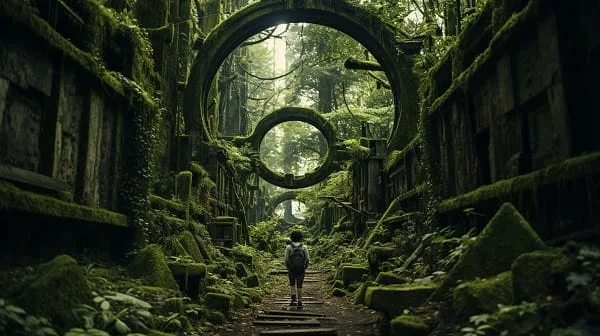


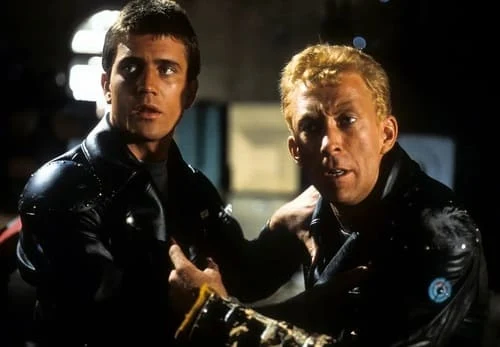

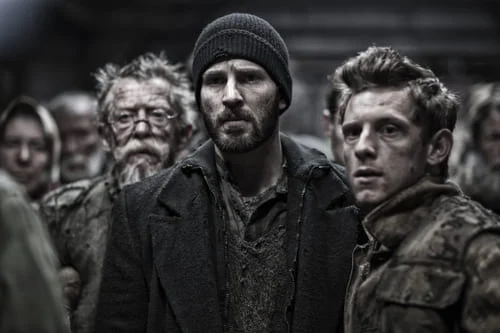

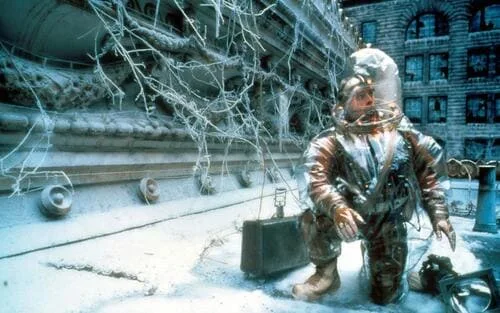
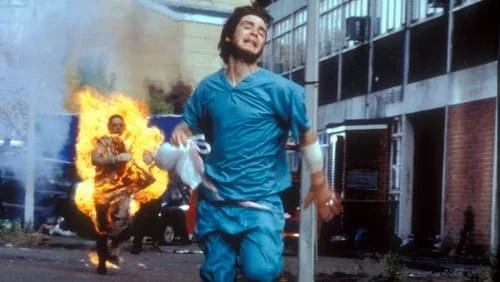

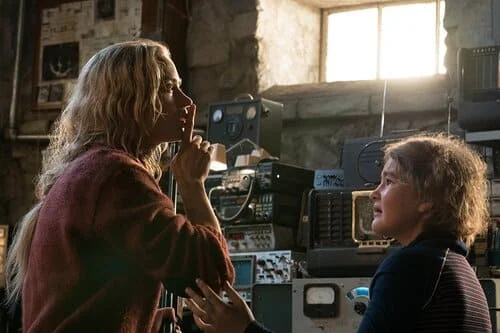

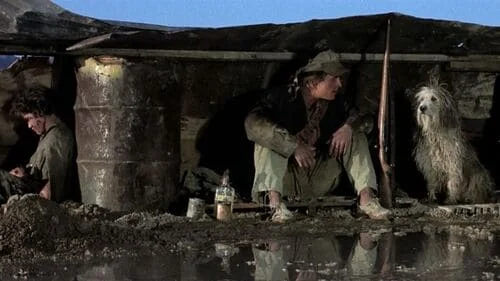



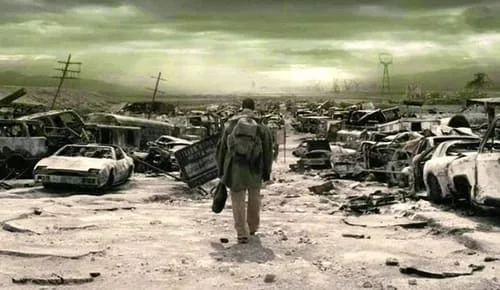
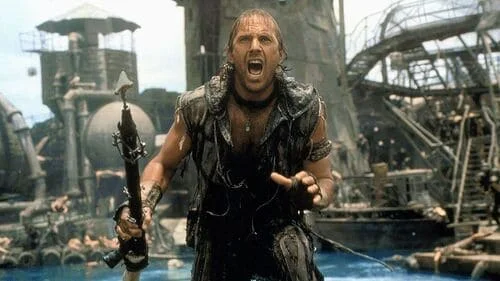



.jpg)
.jpg)
.jpg)
.jpg)
.jpg)
.jpg)






